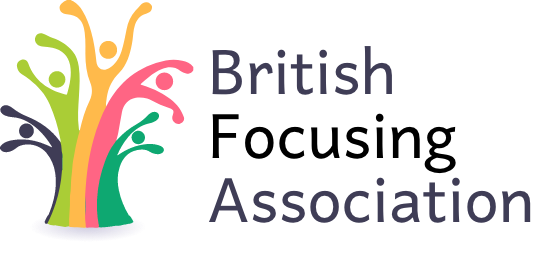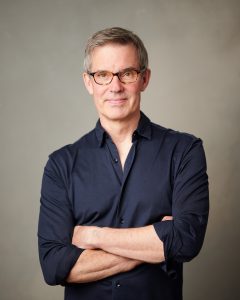
Philosophy Spirituality Therapy
FOT and the Greasy Beast:
Welcoming the undomesticated nature of living process
Greg Madison
All forms of Focusing offer deep transformational experiences. So much so that I sometimes wonder if, as therapists, we add much extra value in FOT sessions. What can therapy, especially Focusing Oriented Therapy, offer that enhances the potential of an already powerful Focusing process? How can therapy, a modern western culture invention that emphasizes the individual, be appropriate for other cultures?
I think there is a role for FOT that could be deeply valuable in the world. In therapy we add in the therapist as a person for the client to meet. The therapist, like the Focusing Guide, sits in the chair as another person before s/he offers any knowledge, insight, technique or method, theory, assumptions, or interventions. In contrast to most Focusing sessions, in FOT there are two people sitting with their eyes open looking at each other expectantly. This is a culture. The expectation of interaction is different from a guided Focusing session. It is more like the difficult everyday world where we have problems with other people. The likelihood is that between therapist and client there are some shared values and beliefs and also some diversity. In FOT the interpersonal dynamic of this new ‘culture’ is explicitly attended to. Usually in Focusing sessions the quality of the being-together is fundamentally important but not explicitly talked about. Usually the Focuser is paying attention to the process that we call ‘inner’, already diving into the uniqueness that exceeds the culture of meeting.
FOT offers the unusual experience of attempting to remain connected with the ‘inner’ while simultaneously attending to the world of others, or the ‘interaction’ or ‘the meeting’. Even experienced Focusers can find it difficult to remain connected to themselves when in relationship with other people. Culture so easily takes over and replaces that connection. FOT works in this territory where we try to acknowledge all that comes in-between people as well as ‘the between’ itself. It works cross-culturally by connecting to what is more than culture.
When two people sit across from each other we are already in cultural assumptions. Why sitting across, why two individuals? Why not the whole village? Why not sleeping side-by-side and dreaming together? Why speaking? Cultures give us set principles and expectations for carrying on a daily life, for how to look at things and how to feel about what happens around us. The cultural influences in a FOT session include the therapeutic orientation of the therapist, as well as each person’s specific national, ethnic and socio-economic assumptions, religious traditions, philosophical beliefs, personal history and implicit values. FOT is always a cross-cultural experience, but in a unique way. Therapists seldom look closely at how they already impose a culture. We often don’t even realize our implicit assumptions let alone examine them closely. Focusing therapists also need to explore their assumptions – the context of therapy and the society within which it is practiced can be objects of inquiry in our felt sensing.
Focusing gives us an alleyway through the ready-made concepts, to a deeper level where we have a larger sense of living, beyond what society has fenced off as its perimeter. Focusing therapy invites another person close while we sense deeper. That person gets into our sensing so that they become the ‘toward’ that our senses can relate to. They witness, receive, and most importantly they give us a response towards which we can sense more. Between two in therapy, living can be released from received meanings, the exiled greasy beast of our animal nature can be welcomed back into its birthright. As children our wildness is constantly pressed into the uniform of our culture, how we should look, act, think… Each culture creates exiled greasy beasts. By working with, through, and beyond culture, FOT is culturally sensitive while subverting culture. Our cultures are manifest in the session, but as therapists we want to feel through the culture to the fundamental humanity in our client in order to reveal to them how their humanity affects us.
In FOT clients learn to bring their awareness to what didn’t fit the culture, what couldn’t be constrained by convention so it was labelled as too wild, uncivilised, ‘not-me’, and driven out into oblivion. It is deeply healing when another person celebrates the return of what culture said could only be repugnant to others. The focusing therapist, regardless of culture, offers the interaction where the person comes home to himself or herself. The culture can’t do that. Culture does many valuable things but it does not know how to encourage me to recognise that the home I carry with me will open its doors and windows, throw down its walls, when it meets the depth of another.
If therapy works, the client becomes more marginal to their culture, not more ‘adaptive’ in some simple form-fitting way. In FOT we make efforts to set aside what is ‘in-between’ in order to attend directly to ‘the between’, where relational felt sensing gives us a ‘home’ that is fluid and palpable but not fixed. New and precise meanings and insights arise, which do not exist in explicit culture. The client returns to their daily world where as mother or father they work tirelessly to fulfil what they know is expected of them. But the client has opened up to more than the cultural expectations and has a desire to take steps towards a deeper rightness than culture alone provides. The client becomes an agent of culture change.
Our common humanity is palpable. It is not based upon shared knowledge or collected information. Our commonality is the living process. We understand each other because we are the same sort of process. The unique differentiations and diverse cultures do not have to be a barrier if we are willing to relate from that formless commonality. Focusing and FOT have spread around the world into diverse cultures because these practices offer a way to connect to the eyes of the beast hiding behind the various veneers of culture.

